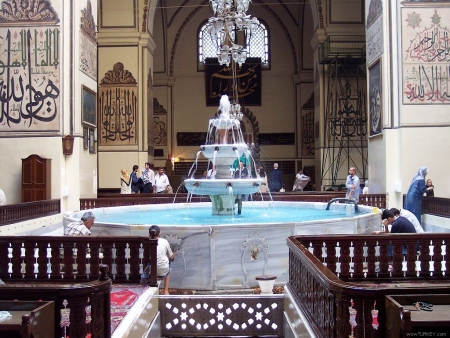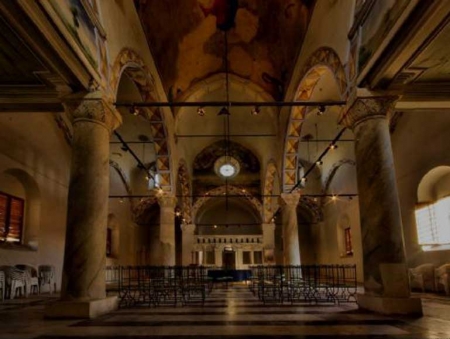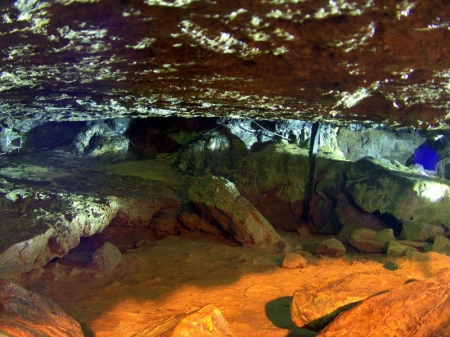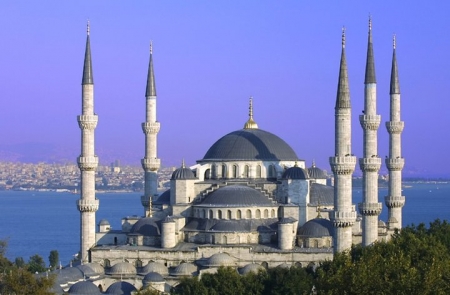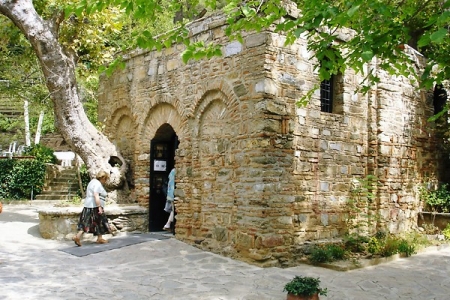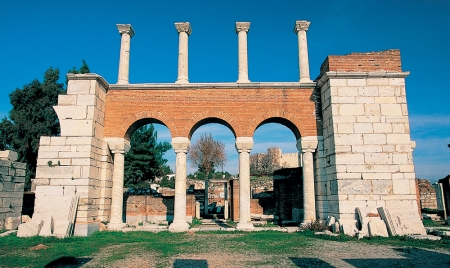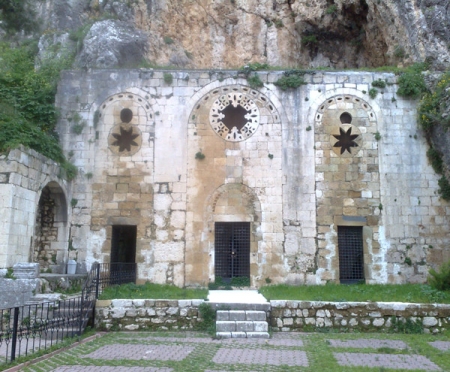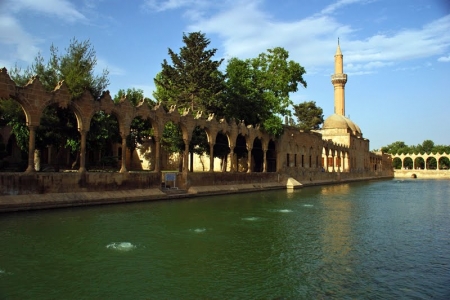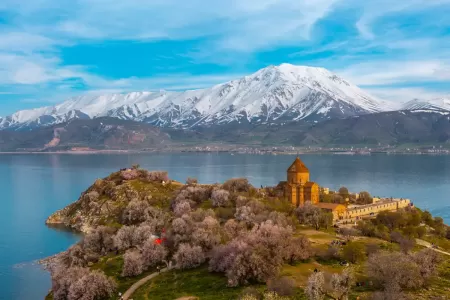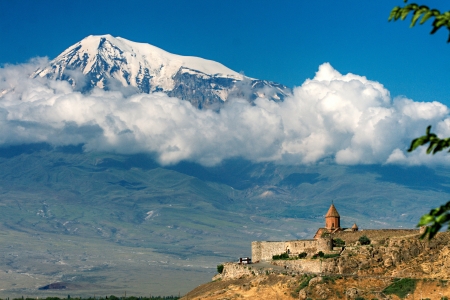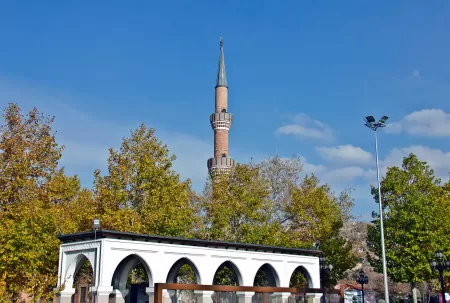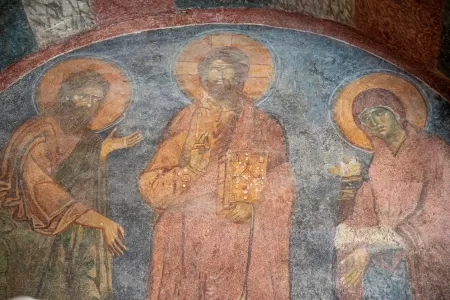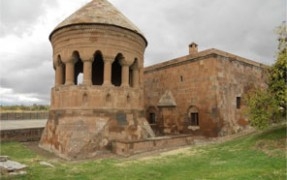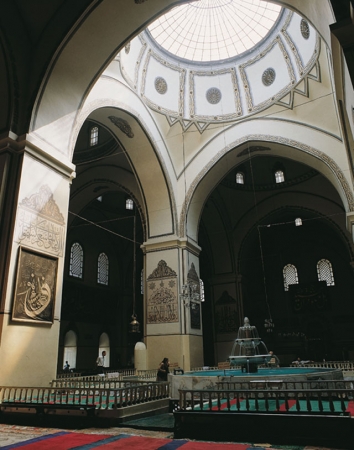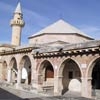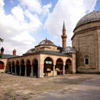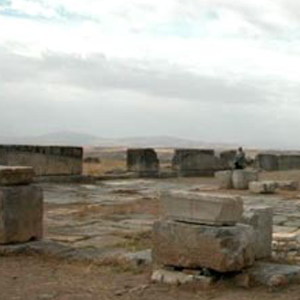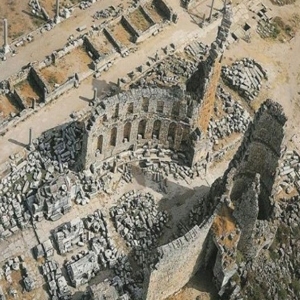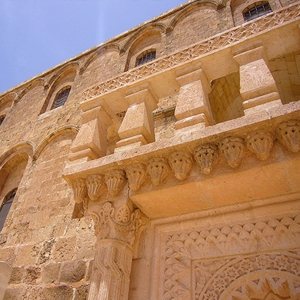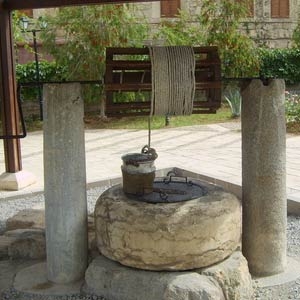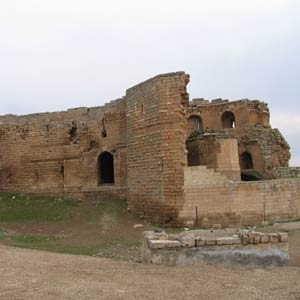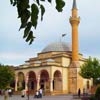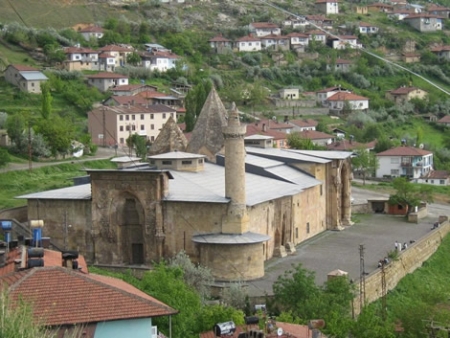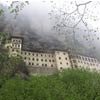Visitor's Guide to Twin Minaret Medrese Erzurum -Çifte: What You Need to Know Before Going
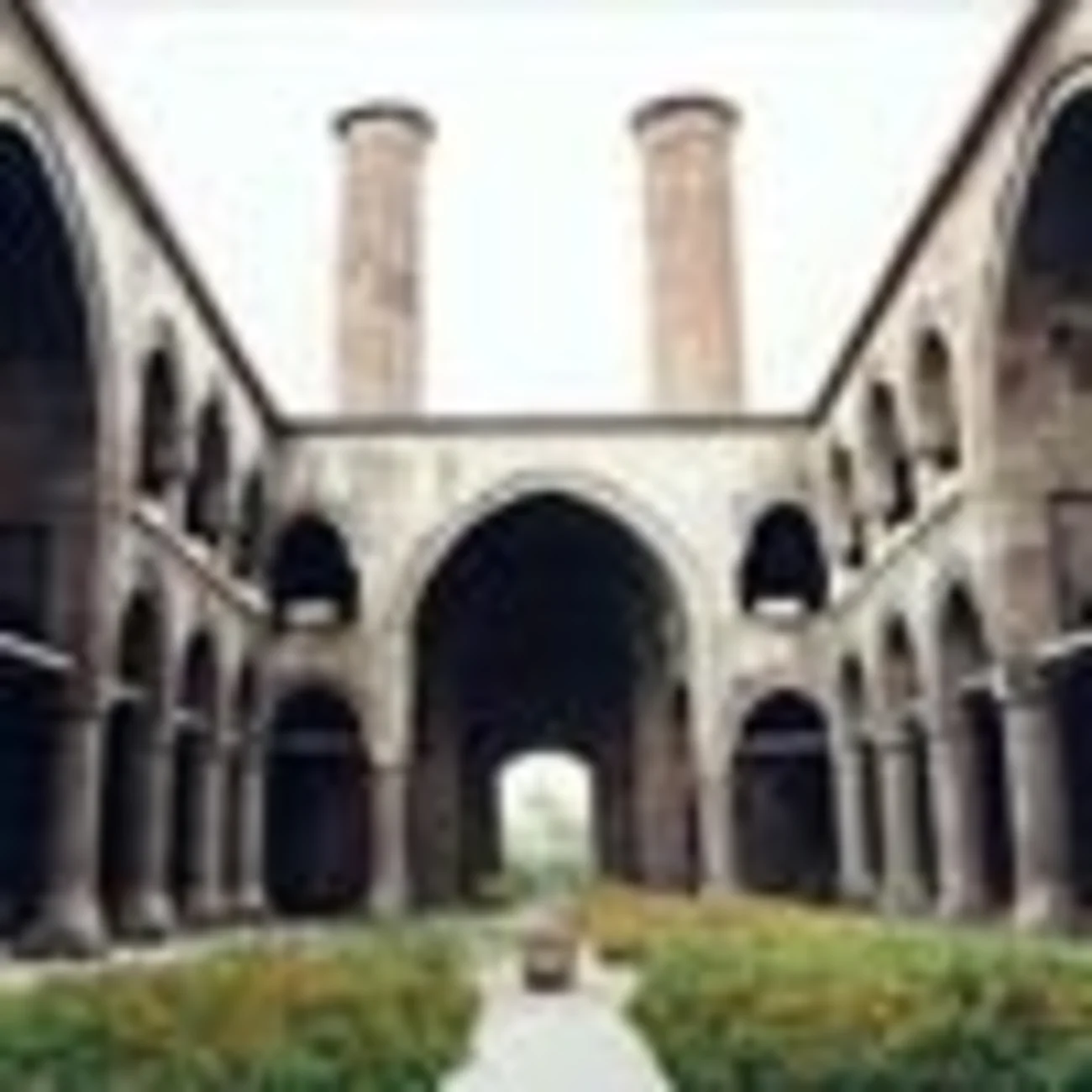
Standing at an impressive 26 meters high, the Twin Minaret Medrese captivates visitors with its colorful tiled minarets that have become a symbol of Erzurum, Turkey. This magnificent Seljuk monument, completed in 1291 after nearly four decades of construction, certainly ranks among the most significant historical structures in the region.
The çifte twin minaret medrese is not only historically important but also architecturally remarkable. It is the largest medrese in Anatolia, sprawling across approximately 1,824 square meters (38m x 48m). Originally built as a theological school before 1265, this stone structure has served multiple purposes throughout its colorful history, including as a gun foundry in the seventeenth century and as an arsenal in the nineteenth century. As you explore this architectural marvel, you'll discover its distinctive four-iwan plan centered around an open courtyard measuring approximately 30.5 x 12.2 meters, framed by two-story porticos.
How to Get There and When to Visit
The Twin Minaret Medrese awaits your discovery in the heart of Erzurum, offering free admission to all visitors interested in exploring this historical treasure. Whether you're planning a day trip or an extended stay in the region, knowing the practical details will help you make the most of your visit.
Location in Erzurum city center
Finding the Twin Minaret Medrese is straightforward, as it sits prominently in downtown Erzurum. Specifically, you'll locate this architectural marvel along Cumhuriyet Avenue in the Yakutiye district. At just 962 meters from the city center, the medrese is easily accessible by foot from most central accommodations.
Fortunately, its central position makes it convenient to include in your itinerary without requiring special transportation arrangements. The medrese's location puts you right in the historical heart of Erzurum, with many other significant sites within walking distance.
Best time of year to visit
While the Twin Minaret Medrese welcomes visitors year-round, you should prepare accordingly if traveling during winter months. Erzurum experiences notably cold winters, with the ground often becoming icy and slippery around the medrese.
If you're planning a winter visit, consider these essential preparations:
- Dress warmly with proper winter clothing
- Wear appropriate footwear with good grip to navigate icy surfaces
- Allow extra time for careful movement around the site
The medrese typically opens at 8:00 AM, giving you ample opportunity to plan your visit at your convenience. An hour is generally sufficient to explore the site thoroughly, though history enthusiasts might wish to linger longer.
During summer months, you'll enjoy milder temperatures and easier navigation of the grounds, making it potentially more comfortable for extended exploration.
Nearby landmarks to explore
One of the advantages of the Twin Minaret Medrese's central location is the abundance of other historical sites within walking distance. This allows you to create an enriching cultural itinerary centered around this area.
Notable nearby attractions include:
- Grand Mosque (Erzurum Ulu Camii) - A magnificent historical mosque just 954 meters from downtown
- Three Tombs (Uc Gumbetler) - An important historical site worth visiting
- Yakutiye Medresesi - Another significant historical madrasa 736 meters from downtown
- Erzurum Castle - A historical fortress approximately 1 km from the city center
- Rustem Pasha Kervansaray (Caravanserai) - A historical market where you can enjoy shopping
- Caferiye Cami - A beautiful mosque near the medrese
- Erzurum Kültür Sanat Evi - A cultural center showcasing local arts
- Lala Mustafa Pasha Mosque - Another architectural gem in the vicinity
- Clock Tower - Offering panoramic views of Erzurum from above
Additionally, if you have more time in Erzurum, you might consider venturing slightly further to Palandöken Mountain, popular for skiing and located just a short distance from the city center.
When planning your itinerary, many visitors combine the Twin Minaret Medrese with these nearby attractions to create a comprehensive historical tour. The proximity of these sites means you can efficiently explore several important landmarks in a single day without feeling rushed.
For optimal sightseeing, start with the Twin Minaret Medrese in the morning, then proceed to the nearby Grand Mosque and Three Tombs before exploring other sites according to your interests and available time.
What to Expect Inside the Medrese
Upon crossing the threshold of the Twin Minaret Medrese, you'll find yourself in a world that contrasts with its elaborate exterior. The internal spaces reveal a fascinating glimpse into medieval Islamic education and architecture, though perhaps less ornate than the exterior might suggest.
Layout of rooms and courtyard
The heart of the Twin Minaret Medrese features a rectangular complex centered around an impressive two-story courtyard with four iwans (vaulted spaces). This courtyard measures approximately twenty by thirty-six meters and serves as the primary organizing element of the structure.
Throughout the medrese, a two-story arcaded portico surrounds the courtyard on three sides. When you enter through the main portal, you'll immediately notice a small domed room to the west that once functioned as a small masjid (prayer room). From there, the entrance hall opens through an arched iwan onto the spacious courtyard.
The layout follows a systematic arrangement:
- The south side features a large iwan leading to the mausoleum
- The east and west sides each have a central iwan
- Doorways on the east and west sides lead to small cells accessible from the porticoes
In total, the medrese contains nineteen rooms on the first floor and eighteen on the second floor. All these rooms can be accessed through the arcaded portico, creating an efficient circulation pattern typical of Seljuk educational institutions.
Highlights of the interior
Within the medrese, several architectural elements stand out despite the overall less sumptuous interior compared to its exterior. The courtyard, flanked by loggias on two floors, once served as the hub around which classrooms, student accommodations, and possibly teacher quarters were arranged.
The doorways leading to the small cells merit special attention, as they are framed by muqarnas hoods (stalactite-like decorative elements) and archways carved with a remarkable variety. Despite this ornate detail, it appears that some decorative aspects of the medrese were never fully completed—only a few of the arcade column capitals show carving work.
Particularly noteworthy is the mausoleum (türbe) adjoined to the southern end of the building. You can access it through a door in the back of the south iwan. Inside the upper floor, you'll discover a space designed as a dodecagon (twelve-sided shape) covered with a dome. The mausoleum's exterior features tall blind arches, geometric friezes, and a conical roof divided into segments decorated with arches in low relief.
Accessibility and visitor flow
As you explore the Twin Minaret Medrese, you'll navigate through the structure following a natural progression from the entrance portal to the courtyard, then to the surrounding rooms and eventually the mausoleum.
From the main courtyard area, two flights of stairs with a landing provide access to the upper floor. This design creates a logical flow for visitors, allowing you to experience both levels of the structure and appreciate the architectural details from different perspectives.
Recent archeological work has enriched our understanding of the complex. Excavations behind the facade have revealed foundations of additional structures—a hospice to the left of the madrasa and possibly a bath on the right. These discoveries suggest that the Twin Minaret Medrese was once part of a larger educational and social complex rather than standing in isolation as it does today.
The internal spaces, though less decorative than the exterior, offer a genuine glimpse into medieval Islamic education facilities, where students once gathered to study religious texts and sciences in these very rooms.
Customize Your Dream Vacation!
Get in touch with our local experts for an unforgettable journey.
Plan Your Trip
Architectural Highlights You Shouldn’t Miss
The exterior of the Twin Minaret Medrese presents a visual feast for architecture enthusiasts. The building's striking façade showcases some of the finest examples of Seljuk architectural craftsmanship that have withstood the test of time since the 13th century.
The twin minarets and their structure
The medrese's most distinctive feature—its eponymous twin minarets—stands proudly above the entrance portal. Unlike many other religious structures of the period, these slender towers rise directly from the facade itself rather than from ground level. First and foremost, what catches your eye is their vibrant appearance with colorful glazed blue tiles arranged in geometric and floral patterns, creating a striking contrast against the stone structure.
Each minaret reaches approximately 26 meters in height, tapering elegantly as they ascends. The cylindrical shafts of these towers display expert craftsmanship with their brick construction and decorative brickwork. A particularly fascinating detail is how the minarets feature balconies (şerefes) supported by stalactite-like muqarnas—a distinctive element of Islamic architecture that creates a honeycomb effect through the use of niche-like cells.
The ornate entrance portal
The monumental entrance portal (pishtaq) of the Twin Minaret Medrese exemplifies the grandeur of Seljuk architecture. Standing beneath this imposing gateway, you'll immediately notice its massive rectangular frame that extends beyond the building's main facade. This portal is remarkably tall, stretching nearly the entire height of the building's front wall.
What makes this entrance truly exceptional is its elaborate stone carving work. The pointed-arch doorway sits recessed within multiple layers of decorative moldings and friezes. Above all, the muqarnas (stalactite vaulting) crowning the portal deserves your attention—this intricate three-dimensional honeycomb structure symbolizes the transition from earthly to divine realms in Islamic architectural tradition.
On either side of the entrance, you'll observe how the facade incorporates decorative blind niches and geometric patterns that add visual interest to the stone surface. These elements create a rhythmic pattern that draws your eye upward toward the minarets.
Seljuk-era stone carvings and tiles
Throughout the exterior, the medrese showcases quintessential Seljuk-era decorative elements. The stone carvings display remarkable precision, primarily featuring:
- Geometric patterns, including stars, polygons, and interlacing designs
- Stylized floral motifs and arabesque patterns
- Calligraphic inscriptions in Arabic script
The tiles adorning various parts of the structure, especially on the minarets, represent one of the finest examples of medieval ceramic art in Anatolia. These glazed tiles predominantly feature turquoise and cobalt blue hues arranged in mesmerizing patterns.
As you examine the building closely, notice how the artisans masterfully integrated these decorative elements with the structural components. This harmonious blend of form and function demonstrates why the Twin Minaret Medrese remains an architectural treasure worth exploring in depth during your visit to Erzurum.
The Story Behind the Medrese
Behind every great monument lies a fascinating story, and the Twin Minaret Medrese holds centuries of history within its walls. This architectural marvel connects us directly to the Seljuk dynasty that once ruled these lands, offering glimpses into medieval Anatolian culture and politics.
Who was Hüdavend Hatun?
The primary historical records attribute the Twin Minaret Medrese to Hüdavend Hatun (also written as Khudavand Khatun), the daughter of the powerful Seljuk Sultan Ala al-Din Kayqubad I, who ruled from 1220-1236. As a royal princess, she wielded considerable influence and resources, enabling her to commission such a magnificent structure. The inscription on the portal confirms her role as the founder of this impressive educational institution.
Nevertheless, historical sources present alternative theories regarding the medrese's patronage. Some scholars suggest it may have been built by Padisha Hatun, who was the wife of Il Khanid Sultan Gaykhatu (who ruled from 1291-1295). This alternative attribution creates some historical uncertainty about both the founder and the exact construction date.
Why is it also called Hatuniye Medrese
The alternate name "Hatuniye Medrese" stems directly from its female patron, as "Hatun" was a title given to royal women in Turkic dynasties. This naming convention was common throughout Anatolia, with several other important medreses bearing the Hatuniye name in different cities, albeit with different founders.
Interestingly, various historical records mention different dates for its construction, ranging from 1253 to 1290. Nonetheless, architectural historians generally believe the medrese was completed before 1277, when Seljuk control of Erzurum ended.
Its place in Seljuk and Anatolian history
The Twin Minaret Medrese holds significant historical importance as it's believed to have served as the architectural model for the Gök Medrese in Sivas, built in 1271. This suggests a spread of architectural ideas throughout the Anatolian Seljuk territories.
Furthermore, the medrese stands as a testament to the Seljuk dynasty's commitment to education and religious scholarship. As one of the largest medreses in Anatolia, it exemplifies how these structures served as centers of learning and cultural development throughout medieval Islamic civilization.
The medrese's construction occurred during a pivotal period when Seljuk power was beginning to decline and the Mongol Ilkhanids were asserting greater control over Anatolia. Consequently, this monument represents not just an architectural achievement but also the complex political transitions occurring throughout 13th-century Anatolia.
Tips for Making the Most of Your Visit
Preparing properly for your visit will enhance your experience at this historical gem. With some practical considerations, you can make your time at the Twin Minaret Medrese both rewarding and respectful.
Photography tips
To capture the stunning architecture of the Twin Minaret Medrese, consider these practical suggestions:
- Visit during morning hours when sunlight illuminates the intricate stone carvings
- Position yourself at a distance to capture both minarets in a single frame
- Look for reflections in puddles after rainfall for creative compositions
- Be mindful of the slippery ground, especially during winter months
- Use a wide-angle lens to capture the impressive scale of the entrance portal
Remember that lighting conditions change throughout the day, so morning visits often provide the best illumination for highlighting the medrese's detailed stonework against Erzurum's sky.
Cultural etiquette
As the Twin Minaret Medrese represents an important religious and cultural landmark, observing proper etiquette shows respect:
- Dress modestly when visiting this religious site - women might consider bringing a scarf
- Speak quietly inside the structure to maintain its contemplative atmosphere
- Remove your shoes if required when entering specific areas
- When greeting locals, a simple handshake is appropriate among men, while women may prefer a nod or smile
- Accept the offered tea as a gesture of hospitality, which is an important cultural custom
Nearby cafes and rest areas
After exploring the medrese, numerous options await to rest and refresh yourself:
The surrounding area offers several cafes and restaurants where you can sample authentic local cuisine. Establishments like Yemek Sepeti and Cag Kebap provide excellent opportunities to experience regional flavors while observing daily life in Erzurum.
For a more immersive experience, visit the Erzurum Pazari market nearby, where you can interact with vendors while enjoying traditional Turkish treats. Many visitors find that these local gathering spots provide valuable insight into community life beyond the historical monuments.
Whenever possible, bring a reusable water bottle to stay hydrated, especially in Erzurum's climate. With appropriate clothing for the season—including sturdy shoes with good traction in winter—you'll be well-prepared to enjoy everything this magnificent Seljuk monument has to offer.
Standing proudly for over seven centuries, the Twin Minaret Medrese certainly ranks among Erzurum's most precious historical treasures. Throughout this guide, you've discovered why this magnificent Seljuk monument deserves a prominent place on your itinerary when visiting eastern Turkey.
The medrese offers far more than just a quick photo opportunity. You'll find yourself immersed in a living piece of 13th-century architectural brilliance, from the vibrant blue-tiled minarets to the meticulously carved stone portal. Additionally, the sprawling courtyard surrounded by student cells tells a compelling story about medieval Islamic education.
Your experience at this historical gem becomes even more meaningful once you understand its connection to Hüdavend Hatun and the broader context of Seljuk dynasty contributions to Anatolian culture. The alternative name "Hatuniye Medrese" likewise reminds us of powerful women who shaped the architectural landscape during this period.
Planning your visit strategically will enhance your appreciation of this landmark. Winter visitors should prepare for icy conditions, while summer travelers might enjoy combining their medrese visit with explorations of nearby attractions like the Grand Mosque and Three Tombs. Regardless of when you visit, proper cultural etiquette and comfortable footwear will serve you well.
After exploring this architectural marvel, take time to reflect on its significance while enjoying local cuisine at nearby cafes. The Twin Minaret Medrese thus stands not only as a testament to brilliant Seljuk craftsmanship but also as a gateway to understanding the rich cultural tapestry of eastern Turkey. This remarkable structure has weathered centuries of history, waiting patiently to share its stories with curious travelers like you.
FAQs
Q1. What is the Twin Minaret Medrese, and where is it located?
The Twin Minaret Medrese is a magnificent 13th-century Seljuk monument located in the heart of Erzurum, Turkey. It features distinctive colorful tiled minarets and is considered one of the most significant historical structures in the region.
Q2. When is the best time to visit the Twin Minaret Medrese?
The medrese is open year-round, but visitors should be prepared for cold winters with icy conditions. Summer offers milder temperatures and easier navigation of the grounds. The site typically opens at 8:00 AM, and an hour is usually sufficient for exploration.
Q3. What are the main architectural highlights of the Twin Minaret Medrese?
Key features include the twin minarets rising 26 meters high with colorful glazed tiles, an ornate entrance portal with intricate stone carvings, and Seljuk-era decorative elements such as geometric patterns, floral motifs, and calligraphic inscriptions.
Q4. Who built the Twin Minaret Medrese and why?
The medrese is attributed to Hüdavend Hatun, daughter of Seljuk Sultan Ala al-Din Kayqubad I, though some sources suggest alternative patrons. It was built as a theological school and stands as a testament to the Seljuk dynasty's commitment to education and religious scholarship.
Q5. What should visitors keep in mind when exploring the Twin Minaret Medrese?
Visitors should dress modestly, speak quietly inside the structure, and be prepared to remove shoes if required. Photography is allowed, but be mindful of lighting conditions and slippery surfaces. After exploring, nearby cafes offer opportunities to sample local cuisine and observe daily life in Erzurum.

